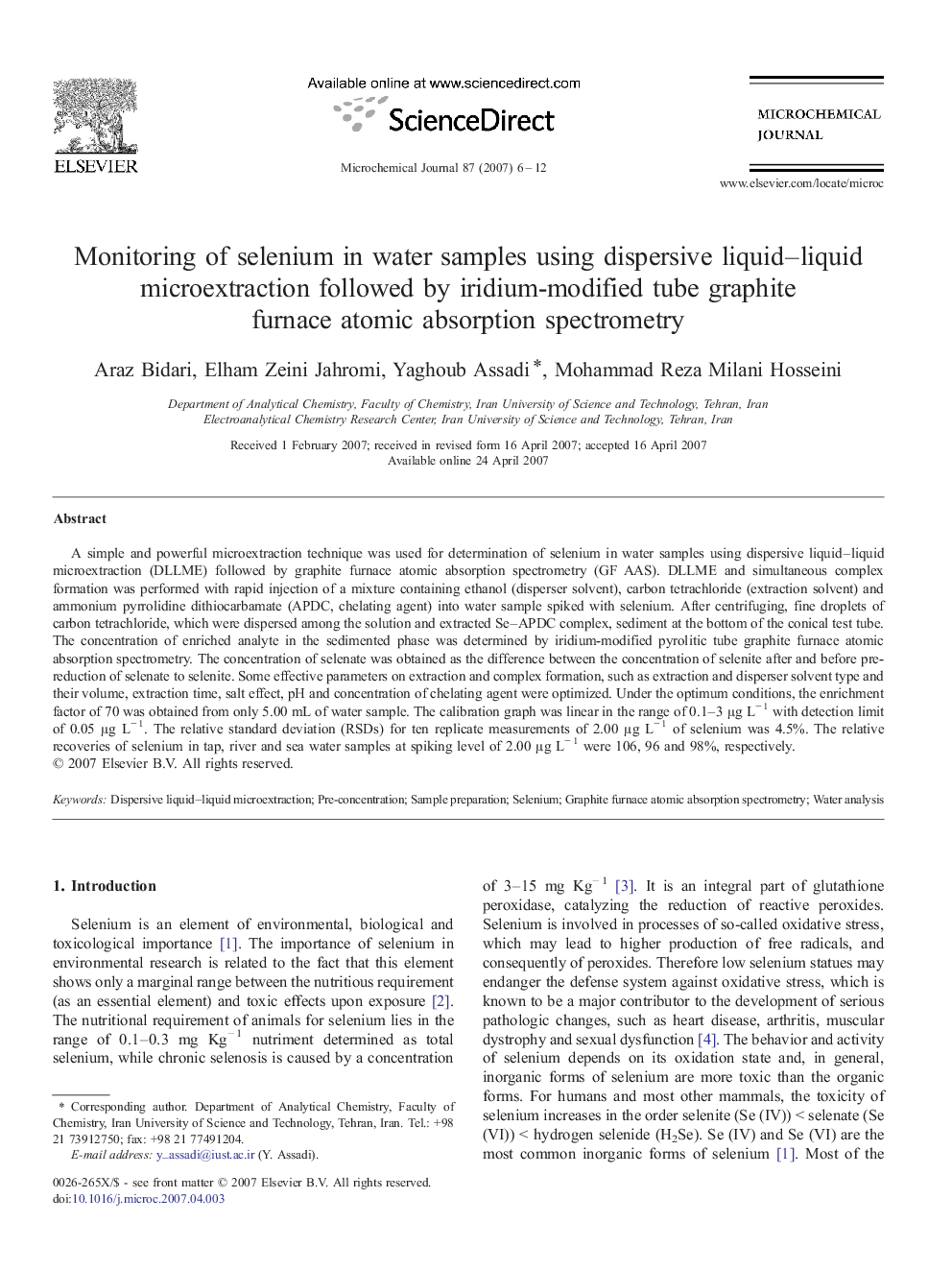| Article ID | Journal | Published Year | Pages | File Type |
|---|---|---|---|---|
| 1228328 | Microchemical Journal | 2007 | 7 Pages |
A simple and powerful microextraction technique was used for determination of selenium in water samples using dispersive liquid–liquid microextraction (DLLME) followed by graphite furnace atomic absorption spectrometry (GF AAS). DLLME and simultaneous complex formation was performed with rapid injection of a mixture containing ethanol (disperser solvent), carbon tetrachloride (extraction solvent) and ammonium pyrrolidine dithiocarbamate (APDC, chelating agent) into water sample spiked with selenium. After centrifuging, fine droplets of carbon tetrachloride, which were dispersed among the solution and extracted Se–APDC complex, sediment at the bottom of the conical test tube. The concentration of enriched analyte in the sedimented phase was determined by iridium-modified pyrolitic tube graphite furnace atomic absorption spectrometry. The concentration of selenate was obtained as the difference between the concentration of selenite after and before pre-reduction of selenate to selenite. Some effective parameters on extraction and complex formation, such as extraction and disperser solvent type and their volume, extraction time, salt effect, pH and concentration of chelating agent were optimized. Under the optimum conditions, the enrichment factor of 70 was obtained from only 5.00 mL of water sample. The calibration graph was linear in the range of 0.1–3 μg L− 1 with detection limit of 0.05 μg L− 1. The relative standard deviation (RSDs) for ten replicate measurements of 2.00 μg L− 1 of selenium was 4.5%. The relative recoveries of selenium in tap, river and sea water samples at spiking level of 2.00 μg L− 1 were 106, 96 and 98%, respectively.
